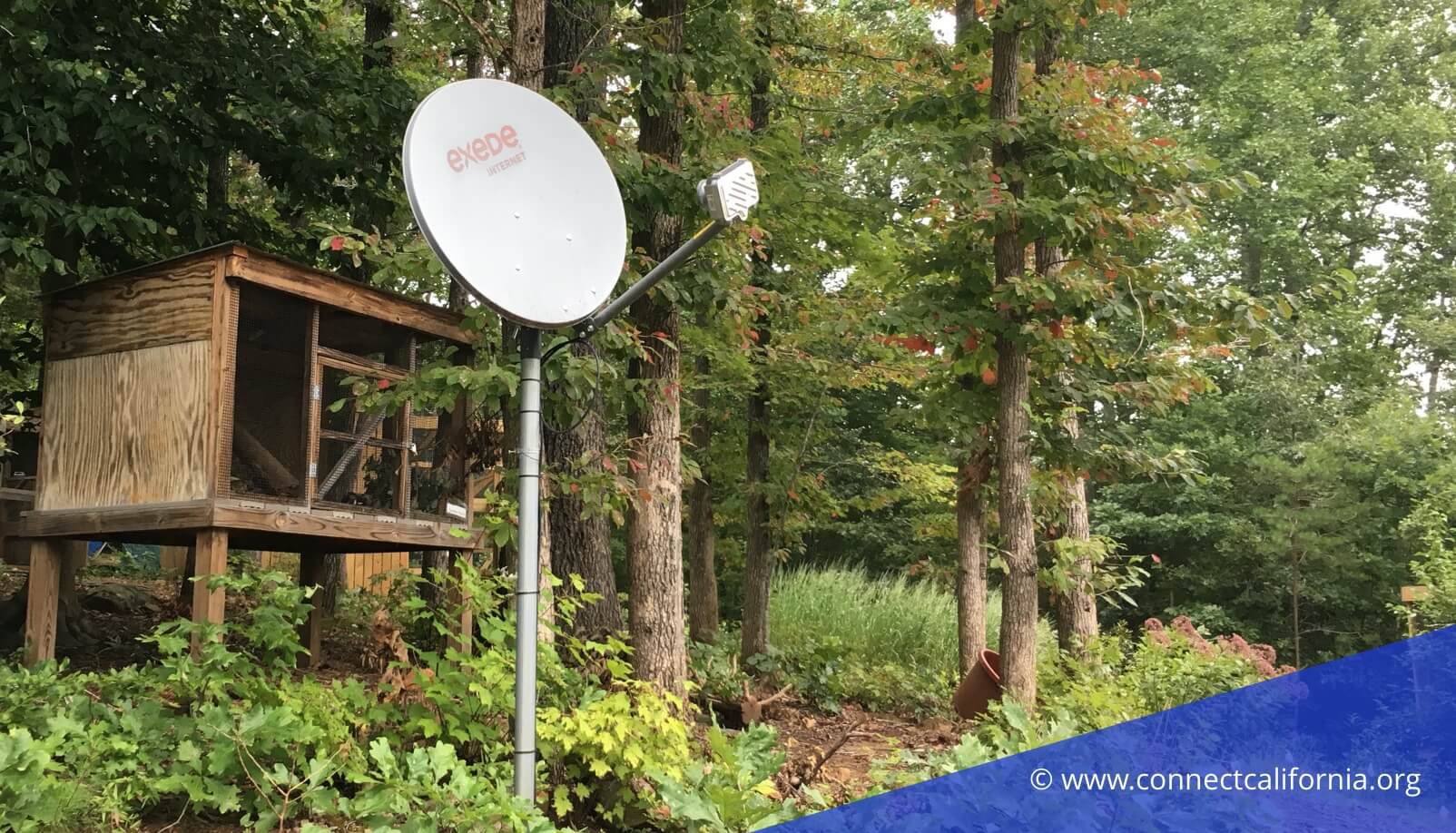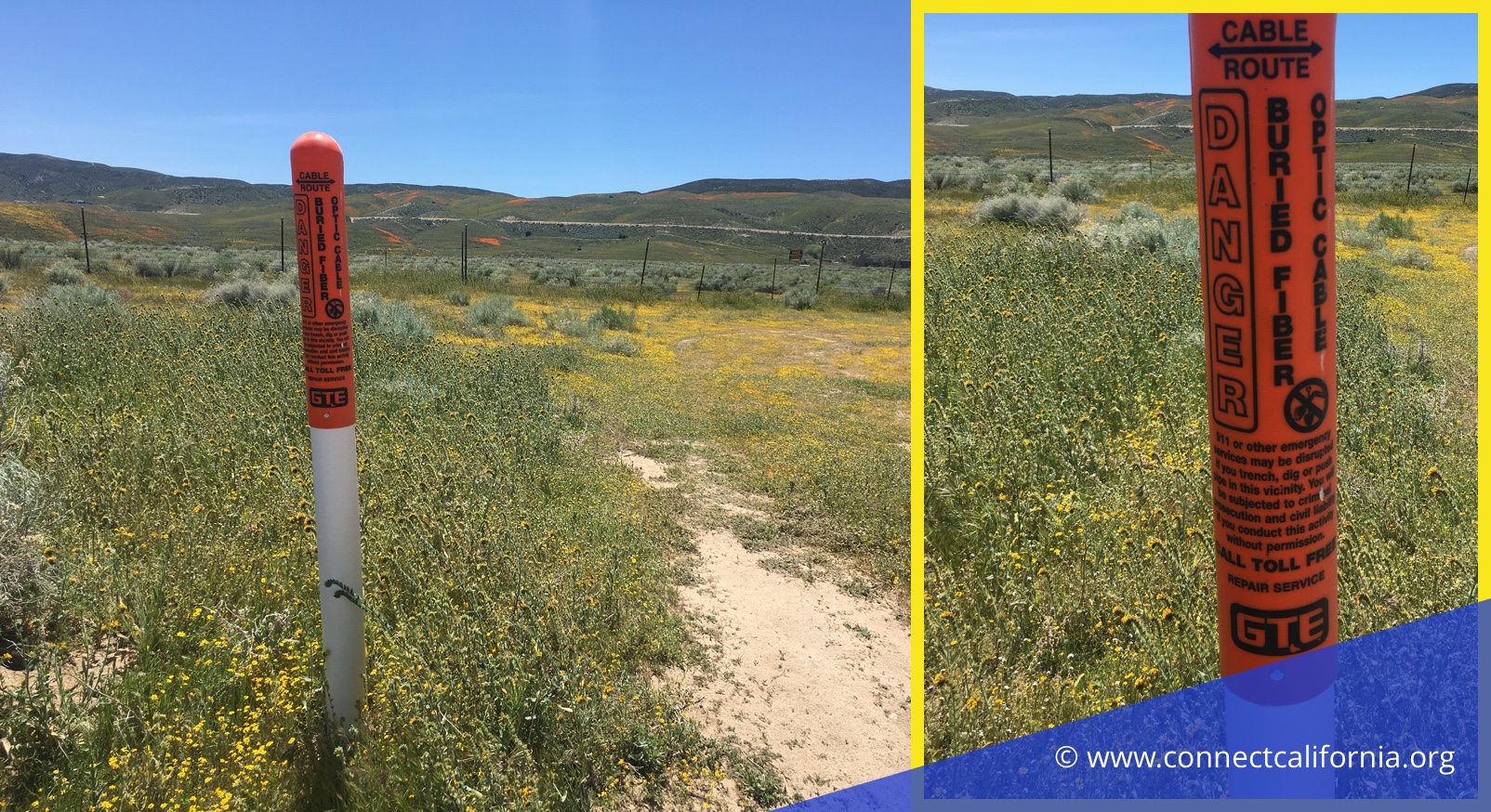If you’re reading this, you’re well aware that internet options are sparse in rural California.
DSL internet is provided by your landline phone company, which is usually AT&T in California. In rural areas, the maximum speed is very low, around 5 Mbps. The key advantage it has over satellite internet is that it is more reliable, less prone to weather interference, and offers more data for the price.
Satellite internet can provide up to 25 Mbps in most of California, and can be installed anywhere since it doesn’t require a physical cable. However, satellite internet has low data limits that can be problematic for streaming video. Satellite internet also has higher costs and fees, as well as a minimum 2-year contract for service from both major satellite providers.
DSL Is More Reliable at Most Locations
If you have both options, DSL Internet is usually the better choice.
The speed is likely to be lower than advertised, since the performance “fades” the farther you are from the provider’s central office.
However, it is more reliable than satellite, and allows for much more data usage (1 Terabyte/month on most DSl plans).

Satellite internet is recommended if you need higher speeds than DSL, or need to install service in a building that doesn’t have a wired connection — such as a barn office.
In this guide, we’ll demonstrate how price, speed, and fees differ between DSL and satellite internet.
Factors to Consider When Comparing Satellite Internet and DSL
These are the factors that matter most when deciding between satellite and DSL internet:
| Feature | DSL Internet | Satellite Internet |
|---|---|---|
| Price | ~$60–90/mo. | ~$70–170/mo. |
| Speed | 1–25 Mbps | 15–25 Mbps |
| Data Allowance | ~250–1000 GB | 10–100 GB |
| Availability | Requires phone line | Universal coverage |
How Satellite Internet Works
Satellite Internet works by connecting your home WiFi network to the internet via a satellite in orbit of the earth rather than via cables on telephone poles or buried underground.
In order to receive service, you’ll have a dish installed on your roof, out a window, or on a tripod in the yard.
Note: you cannot use the same dish you might already have for satellite TV. The companies providing satellite TV and satellite internet are separate and required seperate equipment.
Once the modem and dish are installed, you connect via WiFi just like any other internet type.
Advantages of Satellite Internet
Wider Availability
Satellite Internet rules the roost in rural regions for its wider reach. It does not require any form of hardwiring or cables via roads and neighborhoods to function. A dish attached to the roof of your house is all that’s needed. Satellite Internet can work in any place where there’s a clear line of site between an orbiting satellite and the satellite dish attached to your house.

A DSL connection, on the other hand, is possible only for homes that are within range of a DSL company’s phone lines. For much of California, satellite Internet is invariably the only way to connect to the Internet.
Faster Speeds
Satellite internet has improved dramatically in terms of speeds over the past five years. While they used to struggle to break 5 Mbps, both major providers now offer speeds up to 25 Mbps, meeting the standard definition of broadband internet. This has given them a leg up on DSL providers, who generally have slower speeds at rural locations. .
Drawbacks of Satellite Internet
High Cost
Since there’s not much competition for satellite Internet in rural areas, the plans are usually pricey. Viasat, for instance, charges $70 a month for 50Mbps speeds. If you want 100Mbps speeds, your monthly Internet expenses could go up to $200. Also, satellite Internet companies are notorious for the premium they charge for any additional data you may buy after having exhausted the monthly data limit.
Data Limits
Data caps are an issue with satellite Internet. Even the so-called “unlimited” plans of Viasat, for instance, are not truly unlimited. After you use up the data for the period, which can be up to 150GB, Viasat reduces your Internet speed to about 1 to 5Mbps. This is called a “soft cap” because while they don’t charge you for it, the speed is so slow it’s barely usable.
While the throttled speeds are not completely unusable – you can still browse the Internet, send emails, etc. on them – streaming videos or uploading large files to the cloud with those speeds become next to impossible. Most providers simply charge a fee when you exhaust your data allowance, however, which is why Viasat calls its plans ‘unlimited’.
2-Year Contracts
Contracts are a major issue with satellite Internet connections. Both Viasat and HughesNet make you sign a 24-month contract to install service. Both providers charge early termination fees in excess of $300 if you cancel mid-contract.
These contracts and early cancellation charges are in place because setting up satellite Internet service is not cheap. If you terminate the service within months, a lot of the service provider’s money and effort put into installing service at your home is lost. The cancellation fees help them to discourage customers from leaving before they’ve made a profit.
High Latency
Satellite internet has higher latency or “lag” compared with DSL.
DSL latency is usually around 10–30ms (milliseconds). Satellite internet is much laggier, sometimes as high as 500ms or more.
Latency issues make satellite internet challenging for real-time use cases like video chat and gaming. If you’ve tripped over someone’s words on a long-distance phone call, you know what this feels like.
What Are the Satellite Internet Options in California?
Viasat and HughesNet are the only two major satellite Internet service providers in California — and the rest of the continental US for that matter.

Both HughesNet and Viasat have a strong presence in California and offer 25 Mbps plans. Viasat currently has the better bargain plans, due to having launched an upgraded satellite in recent years.
How DSL Internet Works
DSL stands for Digital Subscriber Line. There are a variety of types of DSL, and what they all have in common is the use of twisted-copper telephone lines to transmit internet data.
DSL uses the same phone lines as dial-up internet, but using upgraded transmission technology that allows it to operate at the same time as the landline voice connection, as well as enabling higher bandwidth and speed.
DSL download speeds usually start at 1Mbps and go up to 6 or 7Mbps in rural areas, which should be good enough for standard definition video and music streaming. You might be able to get closer to 25 if you are near a suburban area within 1–3 miles of a large subdivision.
In urban and suburban areas DSL can reach up to 25–100 Mbps using “fiber to the curb” technology. AT&T uses this approach widely in cities like Los Angeles in order to compete with cable companies.
Fiber to the curb/node is still uncommon in rural areas though, and even when deployed the lines still tend to be longer due to low population density, which creates faded signals.
Advantages of DSL Internet
Stable Connection
DSL is a wired internet connection, meaning that there is a physical cable in between you, the provider, and the rest of the internet. This means that you don’t have to worry as much about storms and other weather disruptions degrading your connection.
The main connectivity issue with DSL is tree damage when lines are strung on telephone poles. If your home is in a heavily wooded area, this can make satellite internet the more stable option. But for most homes, DSL will have higher uptime than satellite.
High Data Allowances
DSL Internet plans usually offer ten times the data a satellite Internet plan offers.
AT&T, like CenturyLink, offers a solid amount of data – up to 1TB (1,000GB) per month.
…Satellite Internet plans with their maximum 50GB and 150GB data caps come nowhere close.
The enormous amount of data is one of the reasons why users choose DSL over satellite Internet, if they have the option.
You do not escape data caps with a DSL connection. However, having a 1TB data usage limit is pretty much akin to having no data cap at all since you would have to stream HD video 24/7 for a month to go over the limit. With satellite, you’d be over a 10Gb plan with only a couple hours watching HD video. In 2024, that’s simply not acceptable for most users.
Better Contract terms
Compared to satellite Internet, DSL Internet plans are on the cheap side. Based on your specific location or zip code, a DSL internet-only plan will likely cost you only $50–80/month.
This pricing is often available with a one-year contract, or no contract at all, depending on the provider. This makes DSL a much better choice, particularly if you are renting.
Drawbacks of DSL Internet
Performance Fade
Most DSL lines are older, lower-quality copper lines. When data needs to cover some distance, these old copper lines may not be up to the task. As a rule of thumb, any distance over three miles from the provider’s central office or nearest transmission station is going to pose problems.
This wouldn’t be so frustrating if you could call and get an exact quote of the performance quality at your location. Sadly, call center agents and online address checks at DSL provider websites do not have this information.
The only way to know for sure what the actual speed will be at a rural location is to either check with a close neighbor who has the same provider, or purchase service and test it before the cancellation window closes. (Most DSL providers such as AT&T will allow you to cancel within the first 30 days at no cost.)
Satellite Internet vs DSL Equipment and Installation
Whether you choose to subscribe to satellite or DSL Internet, you’ll need specific equipment.
The equipment requirements for DSL are pretty straightforward. Just plug in the DSL modem into your existing telephone line, and you’re good to go. You can use the one they provide, or purchase your own to save the equipment leasing fee.
With satellite Internet, the equipment requirements are a bit more complex, requiring a physical dish to be installed on the roof or in the yard, as well as requiring clear line-of-site with the southwest sky (which is where Viasat and HughesNet satellites orbit).
Both HughesNet and Viasat offer free installation. The equipment for the installation cannot be purchased, at least with Viasat. You will have to lease them for a monthly fee. The lease fee is[ $10 a month or $299.99 for a lifelong lease.
HughesNet lets you buy or lease the equipment. For outright purchase, you’ll have to shell out $400 — this only makes sense if you anticipate living at the location for 3+ years, since equipment gets upgraded every 5–10 years at the maximum. The monthly fee for leasing is $15, which is expensive, but not as expensive as brand new equipment if your dish gets knocked off the roof or damaged by a tree.
Needless to say, DSL has the upper hand over satellite when it comes to equipment requirements and installation costs. Having said that, satellite Internet dishes are becoming more reasonable in terms of size. We anticipate satellite providers will relax some of their leasing and contract requirements over the next couple years to compete with other wireless internet alternatives like fixed wireless — which AT&T has been testing widely in the southeast region.
Which Internet Connection Type Is Better for Streaming and Gaming in Rural Areas?
Satellite Internet is not cut out for streaming high definition video, thanks to its data caps. DSL is better for this, even with a limited 5–10 Mbps connection.
Satellite has enough speed for gaming, but the latency can cause issues if you’re a competitive gamer. Casual gamers are unlikely to notice a big difference. The issue is when it comes to downloading games — satellite internet data caps can be eaten up quickly by large game files off platforms like Steam.
There is a workaround though. Both Viasat and HughesNet have “free hours” in the middle of the night when data caps are lifted. They do this because so few people are on the network. If you can schedule your large file downloads for the wee hours, this can save data and allow you to game safely on satellite without getting a surprise bill in the mail for going over your data allowance.
Is Satellite Internet the Only Option in the Absence of DSL?

Besides satellite and DSL Internet, you may have a couple of other options to connect to the Internet in rural California:
Satellite Internet Alternative: Mobile Hotspot
If you do not consume a lot of Internet data and have cellphone service in your region, using a mobile hotspot can be a solid workaround. These tend to have data limits similar to satellite, but they can actually be faster and more reliable if you happen to live near a cell tower.
Satellite Internet Alternative: Fixed Wireless
Fixed Wireless internet was pretty uncommon just 5 years ago, but it’s become very common as of 2024. AT&T has been expanding fixed wireless coverage in the southeast, and providers like Rise, Hargray, and Starry have been promoting wireless home internet in urban as well as rural markets.
Fixed wireless internet has a similar installation process to satellite: a dish on the roof, out a window, or in the yard. The main difference is that the signal for fixed wireless comes from a nearby tower rather than space. As a result, the speeds and latency are much more favorable.
Fixed wireless is commonly provided by local companies that specialize in a specific town rather than servicing the whole US, like AT&T or Verizon.
Conclusion: Satellite is a Plan B
Since fiber-optic and cable lines are pretty much out of reach for small towns and villages of California, DSL and satellite Internet are your only viable options.
Satellite Internet, no doubt, has greater penetration. In fact, it is the major reason why most remote locations in the country have Internet access. However, satellite Internet’s data caps can be a big deal breaker if you do a lot of streaming. Price could be another deterrent.
If your budget is tight, but you can live with relatively slow Internet speeds, and have the option, DSL should work out well. It doesn’t tie you to contracts, offers tons of data per month, and you invariably have more service providers to choose from than just two.
Satellite Internet should be considered only if you don’t have access to DSL Internet service – which is highly unlikely in a state like California.



